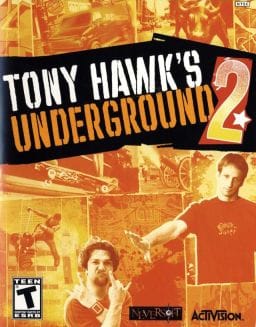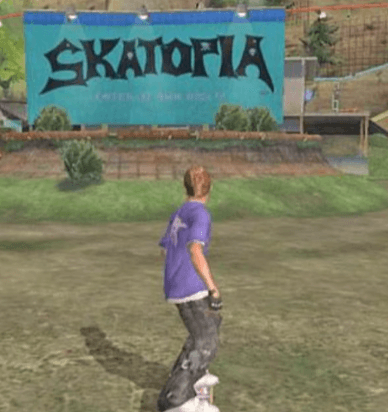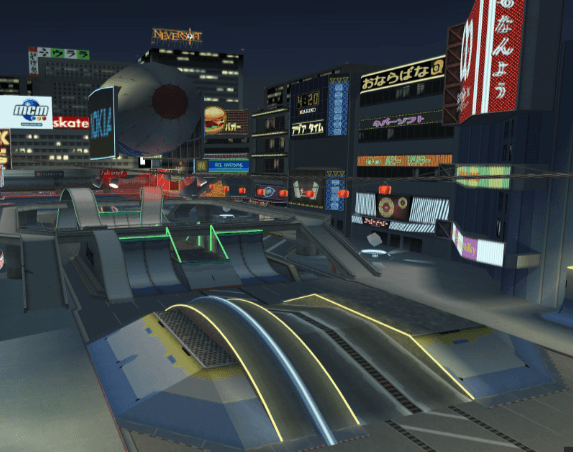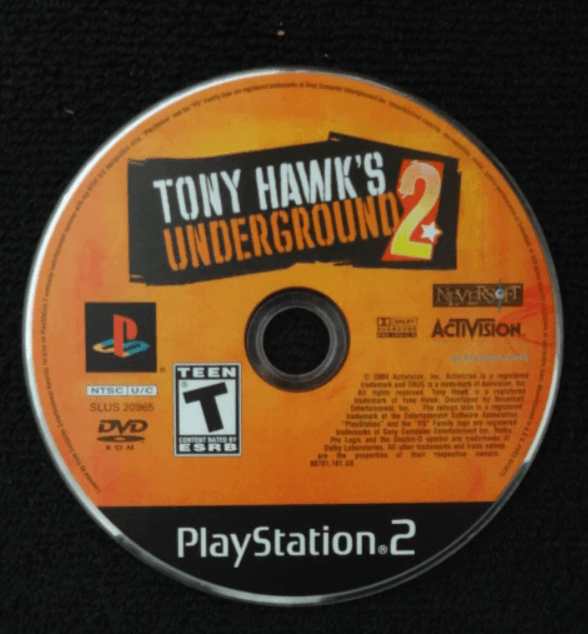It’s a late Saturday night, sometime in 2003. You’ve just cracked open a can of Mountain Dew, grabbed a couple of pizza pockets, and fired up your PlayStation 2. The Tony Hawk Underground (THUG) intro music kicks in, and you’re instantly transported into a world where nothing else matters but nailing the perfect trick combo and pulling off sick lines. Skateboarding wasn’t just something you watched; it was something you lived, and THUG was the doorway to that world. If you were like me, weekends were spent with friends or solo, skating through the streets of virtual New Jersey or doing impossible tricks off ramps in Hawaii. THUG wasn’t just a game; it was a way of life.
Now, fast forward to 2024, and Tony Hawk Underground still holds a special place in the hearts of gamers worldwide. Despite the flood of new skateboarding games over the years, none have managed to capture the magic of THUG. The game still resonates, not just as a fun way to kill time but as a nostalgic masterpiece that takes you back to those carefree days of gaming with friends.
So why has Tony Hawk Underground endured the test of time? Why do people still boot it up for a session of skateboarding glory nearly 20 years later? Let’s dive deep into what made this game a timeless classic and why it continues to captivate new and veteran players alike.
A Revolution in Skateboarding Games
Tony Hawk Underground was the fifth game in the Tony Hawk series, but it wasn’t just more of the same. It revolutionized the skateboarding genre in ways that players could never have expected. When it dropped in 2003, it wasn’t just another skateboarding simulator; it was a fully fleshed-out experience that combined skating, storytelling, and open-world exploration.
What made THUG stand out from its predecessors was the sheer freedom it gave players. You weren’t just confined to your board—you could hop off, run around, climb buildings, and explore the city at your own pace. For the first time in the Tony Hawk franchise, players could ditch the board in the middle of a trick combo and continue chaining tricks using the Caveman mechanic. This level of creativity gave skaters the freedom to push the limits of what was possible and made every session feel fresh and exciting.
Not to mention, the game’s storyline made you feel like you were living the dream. You started as a nobody from New Jersey, hustling to make a name for yourself in the skateboarding world. By the end, you were a pro skater, rubbing shoulders with legends like Tony Hawk, Bam Margera, and Rodney Mullen.
A Personal Connection to Your Character
Perhaps one of the most standout features of Tony Hawk Underground was the ability to fully customize your character. You didn’t just play as Tony Hawk or another well-known pro skater—you were your own person, complete with a customizable face, outfit, and skate deck. This level of personalization brought an unprecedented level of immersion.
Back in the day, I remember spending hours tweaking my character. I’d upload my face onto my skater using the Face Mapping feature, slap on a pair of ripped jeans and a hoodie, and create a custom skateboard that felt like an extension of my real-life self. My skater became a reflection of who I was—or who I wanted to be. Every grind, every trick, and every combo felt like I was putting myself on the screen.
This connection to your skater made the story mode all the more engaging. You weren’t just watching a story unfold; you were the story.
Characters That Made the Game a Blast
Of course, one of the highlights of THUG was skating alongside legendary characters who had become household names in the skateboarding world. From Tony Hawk himself to the outrageous antics of Bam Margera, THUG brought together an iconic roster of skaters that added authenticity and fun to the game.
Tony Hawk was the poster boy, the godfather of modern skateboarding, and his presence in the game cemented the series’ legacy. But there were so many other characters that left their mark on players.
- Bam Margera: Known for his wild personality from Jackass, Bam brought chaos and laughter to the game. His ridiculous antics fit right into the over-the-top skateboarding universe of THUG.
- Rodney Mullen: The inventor of countless flat ground tricks, Mullen brought an unmatched technical mastery to the game. Playing as him made you want to land perfect manuals and flip tricks with precision.
- Chad Muska: The hip-hop-loving skater with a boom box. Muska was larger than life and oozed style in the game, making him a fan favorite.
Then there were the unlockable characters that added an extra layer of fun:
- Iron Man and Gene Simmons from KISS made surprise appearances, letting you shred as an armored superhero or a rock god. Nothing felt more surreal than watching Gene Simmons lay down a mean kickflip in full stage gear.
The variety of characters made every playthrough feel different, and there was something endlessly satisfying about skating with these legends or unlocking the secret skaters.
The Soundtrack of a Generation
It’s impossible to talk about Tony Hawk’s Underground without mentioning the killer soundtrack. The music was as much a part of the experience as the skating itself. THUG’s soundtrack featured 78 songs from iconic artists across genres like punk, rock, and hip-hop. The diversity of the soundtrack is something that made the game so special. It didn’t just cater to one musical taste—it represented skate culture as a whole.
You had punk rock bangers like “Anarchy in the U.K.” by the Sex Pistols, hip-hop classics like “Express Yourself” by N.W.A., and metal tracks like “Cemetery Gates” by Pantera. Whether you were grinding through New Jersey or hitting a sick combo in Moscow, the music set the perfect mood.
For many, the THUG soundtrack was their first introduction to some of these artists. It wasn’t just background music—it became a playlist that shaped the soundtrack of your life.
Mechanics That Still Hold Up Today
Even with all the flashy storylines and customization options, Tony Hawk’s Underground wouldn’t be remembered so fondly if it didn’t have top-notch gameplay. The game introduced several new mechanics that pushed the boundaries of what was possible in a skateboarding game:
- Caveman/Combo Run-Out: This was the first time in the series that you could get off your board and continue a combo. It allowed players to chain tricks across huge gaps or different terrains, completely changing how you approached each level.
- Acid Drop and Wallplant: These mechanics made transitioning between ramps and walls seamless. Whether you were launching off quarter-pipes or kicking off walls to maintain momentum, THUG’s fluidity made pulling off tricks feel effortless.
- Driving Vehicles: While controversial at the time, the ability to hop into a car or other vehicle added a quirky touch to the game. Sure, it wasn’t realistic, but it was fun, and that’s what THUG was all about.
The controls were tight, the combos were endless, and the learning curve was just steep enough to keep you coming back. Even today, in a world of modern gaming, THUG’s mechanics hold up remarkably well.
Levels That Took You Around the World
Another reason why Tony Hawk’s Underground is still so beloved is the variety of levels it offered. Players got to skate through iconic locations around the globe, each with its unique design and challenges.
- New Jersey: The starting point of your journey, this level had a gritty, suburban feel that made it the perfect backdrop for a rags-to-riches story.
- Manhattan: Skating through the bustling streets of New York City, dodging taxis, and hitting iconic spots like the Brooklyn Banks never got old.
- Hawaii: This level is where you pull off the infamous McTwist over a helicopter. Need I say more?
- Moscow: From dodging Russian tanks to grinding on Soviet-era architecture, Moscow was one of the most unique and memorable levels in the game.
Each level was meticulously designed with multiple hidden areas, secret gaps, and creative lines that encouraged exploration. The levels weren’t just backdrops—they were playgrounds built for chaos and creativity.
The Lasting Appeal of Tony Hawk’s Underground
Nearly 20 years after its release, people are still talking about Tony Hawk’s Underground (THUG) for good reason. This game didn’t just offer incredible skateboarding mechanics; it was a full experience that resonated with players on multiple levels. Unlike many other skateboarding games of the time, THUG brought players into a world filled with heart, grit, and personality. From the moment you booted it up, there was a sense of connection. You weren’t just controlling a skater—you were living out a skateboarding dream.
THUG stood out because it blended the adrenaline rush of skating with a storyline that had depth. It wasn’t just about hitting high scores; it was about the journey from a nobody in the suburbs to a professional skateboarder, rising to the top through grit, talent, and a bit of rebellion. The storyline added layers of emotion that made players feel connected to their character, their friends, and even their rivals.
But it wasn’t just the narrative that grabbed players—it was the freedom the game gave you. THUG gave players the chance to fully customize their experience. You could design your own skater, create custom tricks, and even build your own skate parks. The ability to share your creations online gave the game a sense of community that kept players coming back long after they had finished the story.
The levels were brimming with possibilities too. Whether you were grinding across the rooftops of New Jersey, pulling off a McTwist over a helicopter in Hawaii, or dodging Russian tanks in Moscow, there was always something new to discover. Each level was packed with hidden areas, secret gaps, and opportunities for wild combos. You could spend hours just exploring, finding new ways to link tricks together, and perfecting your lines.
And let’s not forget the soundtrack—a defining feature of the game that introduced a generation to a mix of punk rock, hip-hop, and metal. It wasn’t just background noise; it was the heartbeat of the game, perfectly capturing the rebellious spirit of skate culture.
Even today, Tony Hawk’s Underground lives on. Thanks to modern emulators, fan mods, and a passionate community, people are still playing THUG and keeping its spirit alive. The game’s mechanics have stood the test of time, and for many, it’s more than just a nostalgic trip—it’s still one of the best skateboarding games ever made. Its legacy endures not just because it was a fun game, but because it captured the essence of what skateboarding is all about: freedom, creativity, and expression.
Players continue to host online competitions, mod the game to introduce new features and share custom content with a new generation of gamers. This constant evolution within the community keeps THUG from fading into history. It’s still relevant, and in many ways, it continues to inspire modern skateboarding games that have tried to recapture the magic that THUG perfected.
Special Tricks and Why They Were Legendary
One of the key elements that made Tony Hawk’s Underground so addictive was the range of special tricks you could pull off. These tricks weren’t just flashy—they were essential for achieving high scores and creating epic combos. The game offered an extensive list of these unique moves, and players could customize their own set of special tricks to fit their style of play.
The Double Tap Grind Tricks were introduced in THUG and added an extra layer of complexity to the game’s mechanics. These tricks, such as the Darkslide, Crail Slide, and Hang Ten Nosegrind, required players to quickly double-tap the grind button during a rail or ledge grind. Pulling off these advanced moves not only earned you extra points but also gave you serious bragging rights. The timing needed to execute them while chaining them into long combos was no small feat.
Pressure Flips were another new feature that changed the way players approached flip tricks. By holding down a specific button, players could perform flips using only one foot, offering a unique visual flair and an added challenge. Tricks like these allowed players to showcase their creativity, particularly when building long combos that spanned entire levels.
And then there were the Acid Drops and Wallplants, which were crucial for transitioning between ramps and walls. Acid Drops allowed you to jump from high ledges and smoothly land into a quarter pipe, while Wallplants let you kick off walls mid-air to continue your combo. These tricks weren’t just for style—they were essential for maintaining speed and momentum across levels, making them vital for players aiming for the highest scores.
But it wasn’t just the standard set of tricks that made THUG shine; the game also lets you create your own special moves. The Create-A-Trick feature allowed you to customize every aspect of a trick, from the flips to the rotations, giving players the freedom to design their ultimate move. Once your custom trick was perfected, you could pull it off in-game and add it to your lineup, giving you a personal edge and an even deeper connection to your skater.
The fact that you could chain all these moves together, linking grinds, manuals, flips, and aerials into a single, continuous combo, was what made the game endlessly replayable. Pulling off a series of impossible tricks in a row and watching the combo meter skyrocket was a feeling like no other. It’s no surprise that even today, players still return to THUG to test their skills, push the limits of what’s possible, and chase that perfect combo.
The satisfaction of landing these special tricks, particularly after hours of practice, is one of the reasons why Tony Hawk’s Underground remains a beloved game among fans. The depth of the trick system gave players endless possibilities for creativity, and the ability to customize your trick set meant that no two players had the same style.
Conclusion: THUG Lives On
Tony Hawk’s Underground was more than just a skateboarding game—it was a cultural phenomenon that captured the essence of skate culture and made players feel like they were part of something bigger. Whether it was the deep customization, the epic storyline, or the iconic soundtrack, THUG offered an experience that few games have matched since.
In 2024, its legacy lives on, kept alive by diehard fans, modern technology, and a community that refuses to let it be forgotten. For many of us, THUG isn’t just a game—it’s a part of who we are, a symbol of a time when skateboarding and gaming collided to create something truly special. From the rush of pulling off a perfect combo to the thrill of nailing those special tricks, Tony Hawk’s Underground continues to hold a special place in the hearts of gamers everywhere.
If you haven’t played it in a while, maybe it’s time to dust off that old console, grab a slice of pizza, crack open a can of Mountain Dew, and dive back into the game that defined a generation.




